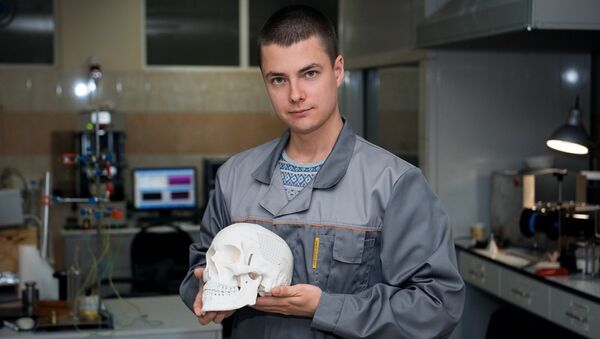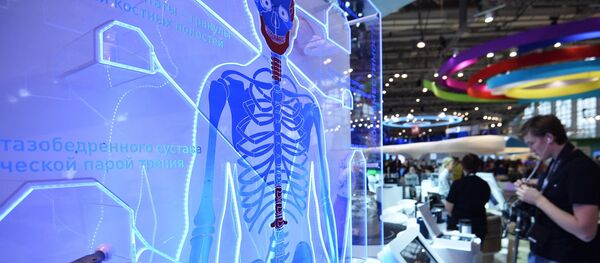MOSCOW (Sputnik) — The results of this project have been published at Materials Science and Engineering, an internationally peer-reviewed, open access journal that aims to promote advanced research applications in the manufacture of metals, polymers, ceramics, etc.
“Our structure (scaffold) consists of two firmly connected layers,” said Fyodor Senatov, PhD, from the Center of Composite Materials at NUST MISIS.
“The first, nonporous, layer, just like a cortical layer of natural bones, makes the construction firm. The internal layer possesses pores of the determined size and can be colonized by recipient’s cells, thus accelerating intergrowth of the recipient’s tissues into the construction and thereby fixing the implant in the defect zone.”
Researchers from the National University of Science and Technology MISIS (NUST MISIS) and their colleagues from the Blokhin Russian Cancer Research Center and the State Plant of Medicinal Drugs have created a method for making implants from materials that satisfy the above conditions.
The researchers proposed ultra-high molecular weight polyethylene (UHMWPE) for this purpose. Using special methods to firmly connect the two layers, they obtained multilayer scaffolds that imitated very closely the complex structure of porous trabecular bone tissue.
The implantation of these scaffolds in mice has shown that the implants could integrate with the surrounding bone. The researchers point out that the multilayer UHMWPE scaffolds they created can be used for bioimplants in reconstructive medicine.



